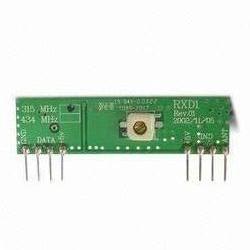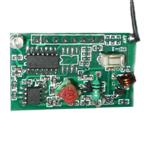neazoi
Advanced Member level 6
hello, I have read the wikipedia article Regenerative circuit - Wikipedia, the free encyclopedia
I would like to focus on the paragraph:
A major improvement in stability and a small improvement in available gain is the use of a separate oscillator, which separates the oscillator and its frequency from the rest of the receiver, and also allows the regenerative detector to be set for maximum gain and selectivity - which is always in the non-oscillating condition.[6] A separate oscillator, sometimes called a BFO (Beat Frequency Oscillator) was known from the early days of radio, but was rarely used to improve the regenerative detector. When the regenerative detector is used in the self-oscillating mode, i.e. without a separate oscillator, it is known as an "autodyne".
I try to think of this configuration as a means of avoid to have to set the regeneration each time I tune to a different frequency. I consider the attached regenerative RX.
I wonder, how this separate oscillator could be made? It has to have a means of feeding back in the input the MODULADED incoming signal in order to amplify it. Not just an unmodulated carier, this should be of no use.
Have you seen any of these separate oscillator regens anywhere?
I would like to focus on the paragraph:
A major improvement in stability and a small improvement in available gain is the use of a separate oscillator, which separates the oscillator and its frequency from the rest of the receiver, and also allows the regenerative detector to be set for maximum gain and selectivity - which is always in the non-oscillating condition.[6] A separate oscillator, sometimes called a BFO (Beat Frequency Oscillator) was known from the early days of radio, but was rarely used to improve the regenerative detector. When the regenerative detector is used in the self-oscillating mode, i.e. without a separate oscillator, it is known as an "autodyne".
I try to think of this configuration as a means of avoid to have to set the regeneration each time I tune to a different frequency. I consider the attached regenerative RX.
I wonder, how this separate oscillator could be made? It has to have a means of feeding back in the input the MODULADED incoming signal in order to amplify it. Not just an unmodulated carier, this should be of no use.
Have you seen any of these separate oscillator regens anywhere?


